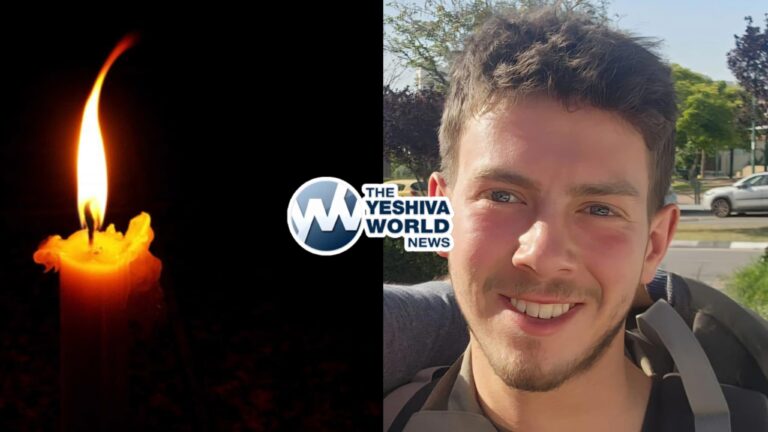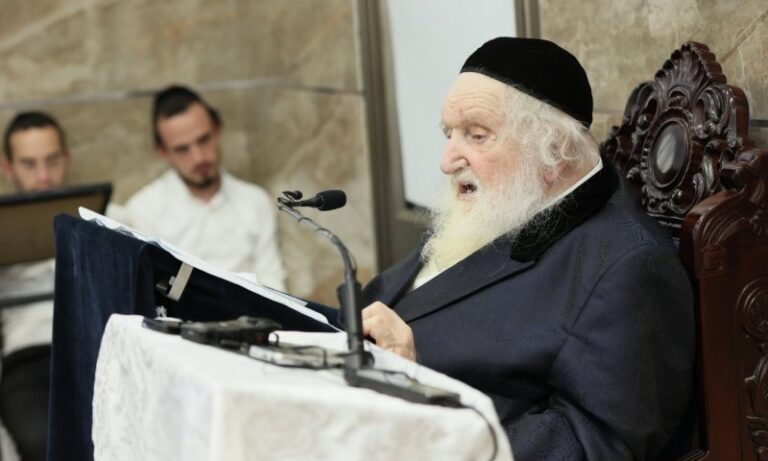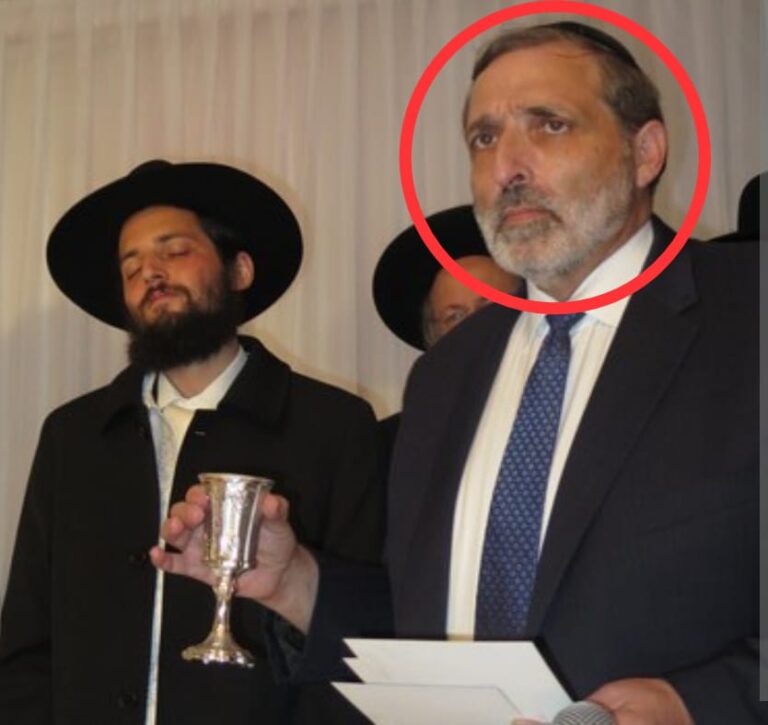
[Halachically Speaking will appear on YWN weekly, Tuesdays and Thursdays]
Walking through the aisles of a supermarket one sees an array of chocolate items for sale such as candies, chocolate cake, chocolate milk, cookies and the like. There are many halachic issues which apply to chocolate. Is one allowed to drink hot chocolate before davening? What beracha is made on chocolate? Is a beracha achrona recited on hot cocoa? What beracha is made on chocolate covered products, such as chocolate covered raisins? How is a chocolate machine kashered? Does bishul akum apply to chocolate? These questions as well as others will be answered at length in this article.
Background – Chocolate Manufacturing
Chocolate starts with a tree called a cacao tree. The tree produces a fruit about the size of a small pineapple. Inside the fruit are the seeds known as cocoa beans. The beans are sent to a chocolate maker who roasts the beans to bring out the flavor. The roasted beans are winnowed which removes the meat of the bean from the shell. This is known as a nib. The nibs are ground into a liquid state called chocolate liquor. Cocoa beans are half fat which causes them to turn into a liquid when ground. If one were to leave the chocolate liquor as is and let them cool and solidify it would be unsweetened chocolate. Another option is to squeeze out the fat from the cocoa bean and one is left with a dry bean which when ground produces cocoa powder.
The chocolate that we eat has ingredients added to it such as sugar, milk (see below), and other flavors. The chocolate goes into a conch which is a machine that makes the chocolate refined and into a smooth paste (see below regarding kashrus). Milk chocolate is a combination of chocolate liquor, milk, sugar and cocoa.
Drinking Hot Chocolate before Davening
Since hot chocolate is a rich drink made with a lot of milk, it is not permitted for adults to drink it prior to davening.[1]
Beracha on a Hot Drink
One should make sure that one can drink the beverage before one recites the beracha.[2] Therefore, one should blow very hot cocoa to cool it down before reciting a beracha.
Chocolate during a Meal
One who eats chocolate during a bread meal has to recite a shehakol on it, as it is not covered by the beracha recited on bread.[3]
Beracha on Chocolate
The halacha is that a food which is normally consumed only after being ground retains its original beracha.[4] The Shulchan Aruch[5] applies this to a sweetened ground spice, since spices are made to be ground the beracha is ha’etz. If this is the case, then the beracha rishona on chocolate should be a ha’etz since it comes from the cocoa bean which is the fruit of a tree.[6] However, the overwhelming custom is to recite a shehakol on chocolate since it is altered when processing into chocolate.[7] Some say the reason for this is since the chocolate in the bean is not eaten as is, and is mixed with other ingredients, it is considered the miyut[8] and the beracha is a shehakol.[9] Others say the reason is because when the bean changes to the liquid state it is a new entity which is not recognizable that it came from a bean at all, in which case the beracha status would change to a shehakol.[10] In any case the custom is to recite a shehakol on chocolate.[11]
B’dieved
One who recited an ha’etz on chocolate was yotzei b’dieved and does not have to recite a shehakol.[12]
Beracha Achrona
There is a big discussion in the poskim if one recites a beracha achrona on a hot drink (i.e. coffee, tea or hot cocoa) since one does not drink the liquid within the shiur allotted for drinking a beverage (kedi sh’tiyas reviis).[13] Some say that a beracha achrona may be recited since coffee, tea or hot cocoa is meant to drink hot, it is the derech, for it to take a long time to drink.[14] However, the opinion of many poskim is that a beracha achrona is not recited.[15] Others say that in order to go according to all opinions, one should let the coffee, tea or hot cocoa cool off and leave a reviisover at the end and recite a boreh nefoshos on that shiur.[16] Some poskim suggest one should put a sugar cube in his mouth so that the beracha achrona on the sugar will exempt the coffee, tea or hot cocoa.[17]
Sucking on Chocolate
Some say no beracha achrona is recited on sucking chocolate without biting it, since it is not the normal manner of eating.[18] In addition, the amount of chocolate that would require a beracha achrona is not consumed within the shiur of kedei achias pras.
Chocolate Products
Chocolate Covered Raisins– If one likes both the raisins and the chocolate, the opinion of Harav Moshe Feinstein zt”l[19] is that two berachos are recited on chocolate covered raisins. First recite ashehakol on the chocolate, and then a ha’etz on the raisins. When reciting the shehakol one should have in mind not to exempt the raisins from a beracha.
Many say that one beracha – on the majority ingredient is recited.[20] If one likes both raisins and chocolate, then if one wants the raisin and views the chocolate as enhancing the raisin, then aha’etz should be recited on the raisin which will exempt the chocolate from a beracha. If he wants the chocolate and views the raisin as an enhancer, then a shehakol is made on the chocolate which will exempt the raisin from a beracha.[21]
The same discussion applies to chocolate covered fruits or other items.
Chocolate Bar with Almonds– Almonds in a chocolate bar are the minority and a enhancing ingredient, therefore, the shehakol on the chocolate covers the almonds as well.[22]
Chocolate Covered Peels– a food which is normally not eaten alone and is covered in chocolate would only require a shehakol on the chocolate. This is common with chocolate covered orange peels.[23]
Chocolate Milk- the beracha on chocolate milk is a shehakol.[24]
Many chocolate products made by Elite in Eretz Yisroel state the beracha to recite on the package.
Hilchos Shabbos – Coloring – Losh
Most poskim say just as there is no problem of coloring food (according to most poskim), on Shabbos, there is no problem of coloring drinks.[25] Others say coloring drinks would be problematic.[26]
The poskim say there is no concern of coloring liquids when putting milk into black coffee,[27] or with placing chocolate syrup into milk. In addition one would be permitted to mix cheese with chocolate butter and there is no concern of coloring on Shabbos (but it must be done in a manner which will avodi any problems of losh).[28]
Writing with Chocolate Syrup
Some for dessert a caterer would like to make a swirl which chocolate etc. on top of a dessert to make it look nice. The question is if this is considered writing which would be forbidden onShabbos,[29] or is only a design and not considered writing?
The opinion of Harav Yisroel Belsky Shlita is that doing so is permitted and it is not considered a design.[30]
Breaking Chocolate with Letters on it
It is very common for chocolate to have images or letters engraved on the chocolate itself. There is a big discussion in the poskim if a food with letters written on top is permitted, or should not be allowed because of “erasing” on Shabbos.[31]
The advice of the Mishnah Berurah[32] is if the letters are not part of the food itself,[33] then one is only permitted to place the food in one’s mouth even though the letters or image will break.[34] A food which has letters written on it from the food itself (i.e. engraved) is permitted to be broken on Shabbos.[35] One is permitted to give any such food to a young child even if he is going to break the letters.[36]
Kashrus of Chocolate – Kashering
Besides dairy chocolate, many products are made with pareve chocolate. Therefore, if a company wishes to make both dairy and pareve on the same equipment, kashering between the two is necessary.[37] Most of the production of chocolate does not require heat except the conch (see above). Chocolate companies are unwilling to introduce water to the chocolate machines, since it can potentially damage the product. An alternative may be to run chocolate through the system once and consider it kashered. However, this approach is a dispute among poskim.
The Rama[38] says that one should not kasher with any liquid other than water,[39] but b’dieved one is allowed to use “other liquids” to kasher.[40] A pressing situation is considered like b’dieved.[41] Based on the above, some kashrus organizations permit a company to make dairy and pareve chocolate on the same equipment after a “kashering” of chocolate in between.[42] Those who dokasher with chocolate do not have to wait twenty-four hours before kashering.[43]
The opinion of the OU is that chocolate becomes solid at room temperature and is not to be used for kashering.[44] This is even if one were to hold like those opinions above that “other liquids”are considered a good kashering.[45] Therefore, their policy is to have two separate systems for pareve and dairy chocolate.[46] Many other kashrus agencies also do not to kasher with chocolate between a dairy and pareve run.[47]
Chocolate Candies to Children after Meat
A child three years and younger does not have to wait any amount of time between eating meat and dairy. One may feed him dairy directly after meat if this is good for the child.[48] However, the child’s mouth should be cleaned out well before eating dairy if it will be right after eating meat.[49] A child over three years old should be trained according to his ability to wait additional time, increasing the time each year.[50] A child 9-10 years old should wait the appropriate six hours.[51] Harav Yisroel Belsky Shlita holds when the child starts going to school he should wait six hours (This is approximately 6-7 years old).
Some say a child should not be given dairy chocolate candies etc before six hours have elapsed since he ate meat, since it is not something he really needs (i.e. supper).[52]
Bishul Akum
Chocolate which is eaten as snack is not subject to the halachos of bishul akum since snacks are not fit to be served on a king’s table.[53] In the event that one is eating a fancy chocolate served at a glamorous meal, then bishul akum may apply, but since the heat from the conches (see above) are generated from the friction of the rollers, it is comparable to an alternative method of cooking[54] which is not subject to bishul akum.[55] Some say chocolate is always exempt since it is a sweet and not eaten together with bread, so it is not subject to bishul akum.[56]
Chocolate syrup is not subject to bishul akum since it is eaten as a tafel to other foods at a meal.[57]
Milk Chocolate
When milk is added to chocolate, regular milk is not used rather powdered milk is used. Powered milk is used in cakes and cookies as well. Powered milk is made by spraying milk into a spray dyer which turns the milk into a powder. Many poskim are of the opinion that one who is makpid to avoid drinking chalav stam, should not eat a food which is made with powered milk.[58]Although some poskim are lenient,[59] the overwhelming custom is to be stringent.
Chocolate “Gelt”
During Chanukah chocolate gelt is available on the market which says “in G-d we Trust” on it. The question arises how one is allowed to eat it since he is erasing the name of Hashem (albeit in a different language).[60] Some say l’chatchilah one should not purchase such chocolates, however, if they were purchased already they can be eaten since eating is not considered erasing since it is the normal manner to eat it.[61] Others say one can purchase it even l’chatchilah and rely on those poskim who maintain the name of Hashem written in a different language is permitted to be erased. This seems to be the custom of most people.[62]
There is a custom to give a child who is getting his hair cut by his upsherin a piece of cake with honey and a posuk written on it.[63] The reason for it is to open the child’s heart to Torah by licking the honey and eating the cake.[64] Some say that one may eat the piece of cake that contains a posuk because it is made for that purpose and has no kedusha.[65] Others took issue with this and did not permit it.[66]
(YWN – Rabbi Moishe Lebovits)
[1] Harav Yisroel Belsky shlita. Children may drink hot chocolate before davening, this is frequent by cocoa club in camp.
[2] Elya Rabbah 202:1, Mishnah Berurah 206:12, Aruch Ha’shulchan 202:11, Kaf Ha’chaim 206:22.
[3] Shevet Ha’Levi 1:205:174, Piskei Teshuvos 174:3. See Rivevos Ephraim 7:267:page 219.
[4] Refer to Shulchan Aruch O.C. 203:7, Magen Avraham 202:18, Mishnah Berurah 203:12, Shar Ha’tzyion 19.
[5] 203:7.
[6] Refer to Mekor Haberacha 21, Ohr Yitzchok 57.
[7] Refer to Sharei Teshuva O.C. 202:19, Igros Moshe O.C. 3:31, Pnei Ha’shulchan pages 102-103, Pischei Teshuvos 202:29.
[8] According to this is if the chocolate is most of the mixture in the product then a ha’etz should be recited (Minchas Shlomo 1:91:2).
[9] Minchas Shlomo 1:91:2.
[10] Tzohar 8:pages 500-502.
[11] Opinion of Harav Shlomo Zalman Aurbach zt”l quoted in V’sein Beracha page 416:footnote 53, Vezos Ha’beracha page 103 quoting the opinion of Harav Elayshiv Shlita, Rivevos Ephraim 8:134, Ohr L’tzyion 2:14:5:footnote 5, Shevet Ha’Levi 7:27:2, Teshuvos V’hanhugos 1:187, Ve’aleihu Lo Yeibol 1:page 110:140, Avnei Yushfei 5:38:1. This refers to milk chocolate or regular chocolate (Refer to Pnei Ha’shulchan pages 102-103).
[12] Opinions of Harav Shlomo Zalman Aurbach zt”l and Harav Elyashiv Shlita quoted in V’sein Beracha page 416:footnote 55, see Vezos Ha’beracha page 103.
[13] Some say the shiur is about a minute (Harav Yisroel Belsky Shlita, see Seder Birchos Haneinen 8:5, Shar Ha’tzyion 210:11). Harav Zilber Shlita says it means about two minutes (Vezos Ha’beracha page 351). Refer to Rivevos Ephraim4:53 who says the shiur is twenty seconds. Refer to Kashrus Kurrents from the Star-K who says the shiur is thirty seconds. Some say it means three sips (Vezos Ha’beracha page 227).
[14] Maharam Shik O.C. 85, Melamed L’huyel O.C. 1:25, Opinion of Harav Wosner Shlita quoted in Sharei Ha’beracha page 304:footnote 42. Refer to Halachos Ketanos 1:9, Sharei Teshuva 204:12, Panim M’eros 2:27, Shulchan Aruch Harav in Seder Birchos Haneinen 8:6, Da’as Torah 204:7, Teshuvos V’hanhugos 2:135 quoting the opinions of the Chasam Sofer and the Divrei Chaim, Pnei Ha’shulchan pages 284-285, Betzel Hachuchma 3:114:5, Shevet Ha’Levi 1-:42:13. The opinion of Harav Wosner Shlita is that a boreh nefoshos is recited even if it took longer than the shiur of sh’tiyas reviis (Quoted in Sharei Ha’beracha page 304:footnote 42. The reason is because some say the shiur that one has to drink is from 2-9 minutes). Opinion of the father of the Piskei Teshuvos quoted in Piskei Teshuvos 688:footnote 23, opinions of Harav Elyashiv Shlita quoted in Vezos Ha’beracha page 227, Shemiras Shabbos K’hilchoso 54:footnote 96 quoting the opinion of Harav Shlomo Zalman Aurbach zt”l. See Maharam Shik O.C. 263, Divrei Yisroel 3:159:2. Some say one should drink it within two minutes (Refer to Vezos Ha’beracha page 228, Avnei Yushfei 1:41).
[15] Ben Ish Chai Massei 1:9, Birchei Yosef 204:5, Moreh B’etzbah 3:96, Chai Adom 50:15, Nishmas Adom 1:50:5, Kitzur Shulchan Aruch 51:6, Mishnah Berurah 210:1, Aruch Ha’shulchan 202:7, Kaf Ha’chaim 204:40, Yabea Omer O.C.5:18 in great depth, Rivevos Ephraim 1:131, 4:53, , 5:166, 8:86, see 8:475, E’ven Pina 1:9:page 9, Ohr L’tzyion 2:14:27, Yabea Omer O.C. 5:18. Some say no beracha achrona is recited on coffee even one one has ice coffee since one is not used to making a beracha achrona on it (Ohr L’tzyion ibid:footnote 27).
[16] Be’er Heitiv 204:12, Mishnah Berurah 210:1, Birchos Habayis 16:14, Yabea Omer O.C. 5:18, Rivevos Ephraim 2:77:page 129, see Aruch Ha’shulchan ibid.
[17] Harav Yisroel Belsky Shlita, see Maharam Shik O.C. 85.
[18] Yabea Omer O.C. 8:25:2:6, Chazzon Ovadia Berochos page 146.
[19] Igros Moshe O.C. 3:31. See Rivevos Ephraim 4:54:16, Be’er Moshe 1:7, 5:65, Oz Nedberu :3:51, 5:14,
[20] V’sein Beracha page 417:footnote 61 quoting the opinion of Harav Shlomo Zalman Aurbach zt”l, Vezos Ha’beracha page 97 quoting the opinions of Harav Shlomo Zalman Aurbach zt”l and Harav Elyashiv Shlita. Refer to Star-K Kashrus Kurrents (topic: The Sweetest Fruit of Them All) quoting the opinion of Harav Moshe Heinemann Shlita.
[21] V’sein Beracha page 417. See Pischei Halacha (Berochos) page 345 who says chocoloate covered almonds are a ha’etz.
[22] V’sein Beracha page 26 (Handbook), Vezos Ha’beracha page 96, Miyum Ha’halacha 1:31. Refer to Avnei Yushfie 1:39:4 about the beracha on chocolate covered matzah.
[23] V’sein Beracha page 416, Handbook page 27.
[24] Refer to Shulchan Aruch 204:1.
[25] Bais Yosef 320, Darchei Moshe 2, Pri Megadim M.Z. 318:15, Eishel Avraham 320:22, Chucham Tzvi 92, Rav Poalim 3:11, Kaf Ha’chaim 113, Yalkut Yosef 320:9, Yesodo Yeshurin 4:pages 68-69. Refer to Zochor V’Shomer page 7, The Shabbos Home 2:page 338, Ohr Yisroel 8:Page 92, Refer to Yalkut Yosef 320:footnote 13, Yabea Omer O.C. 2:20, 10:55:pages 157-158, Yechaveh Da’as 6:23:footnote *, Shulchan Aruch Hamikutzar 62:footnote 54. One may not fill decanters with colored water because it is for decorative purposes (Mishnah Berurah 320:56, The Shabbos Home 2:page 330:footnote 20, see Zochor V’Shomer page 9, Klalim page 341).
[26] Elef Lechu Shlomo 136, Ben Ish Chai Pekudei 2:3, Kaf Ha’chaim ibid.
[27] Ketzos Ha’shulchan 8:pages 18-30, Betzel Hachuchma 4:59, Meor Ha’Shabbos 12:footnote 67*, Toras Hamelochos page 185, Klalim page 371.
[28] Oz Nedberu 5:12:1.
[29] Shulchan Aruch 340:5, Mishnah Berurah 24.
[30] OU document S-18.
[31] Refer to Rama O.C. 340:3, Chazzon Ish O.C. 61:1, Yabea Omer O.C. 4:38 who brings the opinions.
[32] O.C. 340:17, see Chazzon Ish 61:1. Others argue and say one should break the letters on Erev Shabbos (Orchos Rabbeinu 1:page 167:249).
[33] Magen Avraham 6, Mishnah Berurah 15, Opinion of Harav Korelitz (Chut Shunu 1:page 161). The Aruch Ha’shulchan 23 says people are not careful with this.
[34] The Yabea Omer O.C. 4:38 says if the letters etc are engraved in the chocolate etc then it is permitted to break with ones hands. If the lettering etc is on top of the chocolate etc then one should be stringent and break it while in is mouth.
[35] Magen Avraham 6, Mishnah Berurah 15, Ohr L’tzyion 2:40:1, Nishmas Shabbos 7:86, Opinion of Harav Korelitz (Chut Shunu 1:page 161). The Aruch Ha’shulchan 23 says people are not careful with this. The Kaf Ha’chaim 340:61 says those who are stringent are better. Refer to Har Tzvi O.C. 214 in regard to candies. See Tzitz Eliezer 11:20:2, Chazzon Ish 61:1, Nishmas Shabbos 7:97.
[36] Magen Avraham 5, Mishnah Berurah 14, Aruch Ha’shulchan 23, Am Mekadshei Sh’viyi 1:page 128:footnote 45, Nishmas Shabbos 7:96. See Taz 2.
[37] Refer to B’nisiv Ha’chalav pages 66-68 in regard to hagolah with chocolate made from chalav stam.
[38] 452:5, Shulchan Aruch Harav 28, Aruch Ha’shulchan 19For those who are lenient with kashering with “other liquids” refer to Pri Chadash 452:5, Kaf Ha’chaim 452:58, Hagalas Keilim page 226:footnote 1.
[39] Refer to Mishnah Berurah 25.
[40] Rama ibid, Shulchan Aruch Harav ibid, Mishnah Berurah 26, Shar Ha’tzyion 29, Aruch Ha’shulchan 19, Igros Moshe Y.D.
[41] Refer to Shulchan Aruch Y.D. 108:3, Melamed L’hoyel O.C. 1:96. See V’Yan Yosef Y.D. 38.
[42] Included in this are the Badatz of Yerushalayim and other European Hechsherim (The Laws of Pesach: A Digest 2006 page 592, opinion of Dayan WestheimShlita). Shufra Chocolate only manufactures pareve chocolate and do not have dairy in the plant (Ibid page 594). Schmerling is kashered with water or libun (fire) (Ibid page 594).
[43] Mesora 7:page 75:6. Those who eat from companies who use chocolate as kashering do not have to wait after eating meat before eating this chocolate (Mesora 7:pages 74-75).
[44] Refer to Igros Moshe Y.D. 1:60 (end). See Mishnah Berurah 452:26.
[45] OU document I-14:page 4.
[46] As expressed in the Manual for the Chocolate Industry (OU) page 3, OU documents K-63 and K-91.
[47] Such as the KOF-K, and Star-K.
[48] Yalkut Yosef pages 393-395, Divrei Chachumim Y.D. 1:2, Ve’alu Lo Ubol 2:page 64:4. Refer to Nezer Ha’chaim page 214:155 who maintains that even a young one day old has to wait six hours before eating milk. This is not the minhag.
[49] See Chanoch L’nar 29:footnote 1, Be’er Moshe 8:36:4, Shevet Ha’Levi 4:84, see Massei Ish 3:page 147.
[50] See Chelkes Yaakov 2:88, Teshuvos V’hanhugos 1:435, Badi Ha’shulchan 37, Emes L’Yaakov page 306:36, Shevet Ha’Levi 4:84, Be’er Moshe 8:36:4 Yabea Omer Y.D. 1:4. Harav Moshe Feinstein zt”l said the correct age of chinuch in this inyun is if the child knows how to count hours (Pischei Halacha Kashrus 1:page 22:footnote 33).
[51] Badi Ha’shulchan 37.
[52] Hechsheiros 20:25.
[53] Bishul Yisroel page 148:footnote 15.
[54] Refer to Shulchan Aruch Y.D. 113:13.
[55] OU document H-30:page 3.
[56] M’Bais Levi 8:page 40 quoting the opinion of Harav Wosner Shlita.
[57] OU document M-7.
[58] Harav Yisroel Belsky Shlita, see Chazzon Ish Y.D. 41:4, V’Yan Yosef O.C. 113, Yaskil Avdi Y.D. 5:9, Shearim Metzuyanim B’halacha 38:8, Chelkes Yaakov Y.D. 35, Teshuvos V’hanhugos 2:373, Chelkes Binyomin 115:1 biurim “chalav, “ Opinion of the Star-K Kashrus Kurrents, Tzohar 3:pages 33-34.
[59] Har Tzvi Y.D. 103 in depth, Zekan Aron Y.D. 44, see Tzitz Eliezer 16:25:3, Kashrus 2:page 351.
[60] Refer to Shach Y.D. 276:11, Pischei Teshuva 11, 19, Mishnah Berurah O.C. 85:10, Aruch Ha’shulchan Y.D. 276:24, C.M. 27:3, Ginzei Hakodesh 7:footnote 24. footnote 12.
[61] Ve’alihu Lo Yeibol 2:page 120:119.
[62] Harav Yisroel Belsky Shlita.
[63] Rokeach 296. Refer to Natei Gavriel Pesach 3:pages 358-359.
[64] Dugel Mervuva O.C. 340:3, see Osios Machkimos pages 183-187.
[65] Opinion of Harav Elyashiv Shlita quoted in Giznei Hakodesh 11:19:footnote 30, page 265:62 quoting the opinion of Harav Chaim Kanievesky Shlita, see Bais Yitzchok Y.D. 2:107.
[66] Refer to Chavos Yuer 16, Sheilas Yaavetz 2:140, Pri Ha’aretz 2:4, Ginzei Hakodesh 11:19. Refer to Nishmas Shabbos 4:96.











2 Responses
Thank you for Halachically Speaking. To enhance its value, it would be helpful if the author is identified. Respectfully,
Insightful article as always.
It would be nice if someone proofread the articles before they were published.